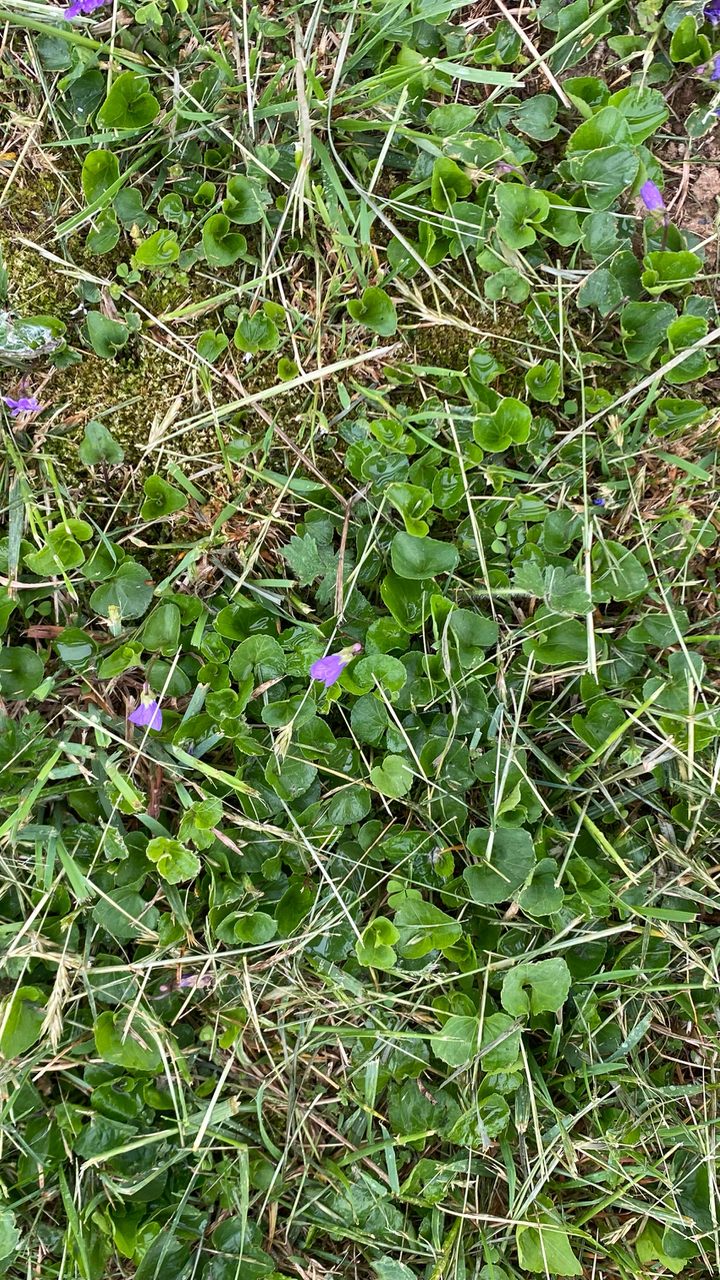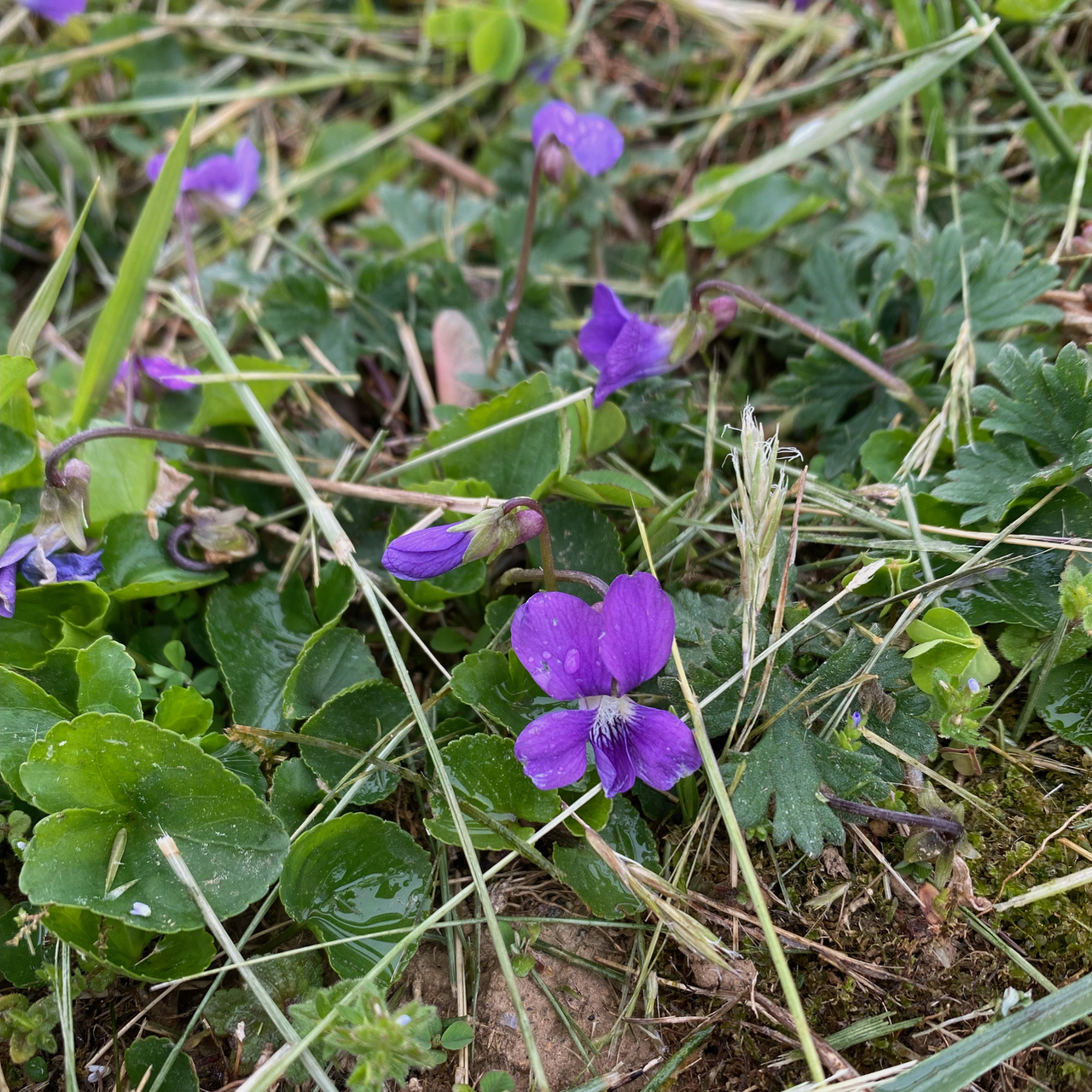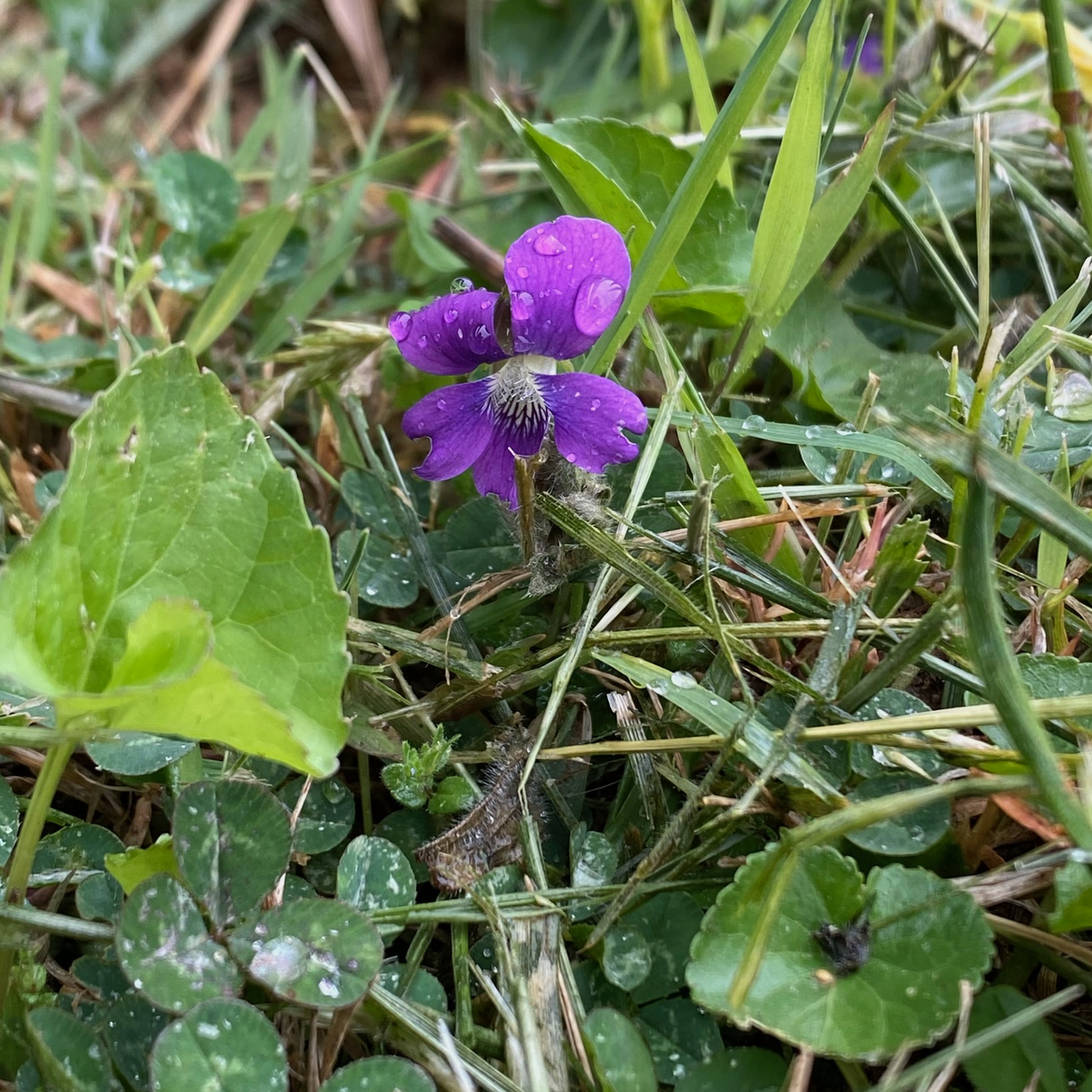Wild violet flowers are these sweet little deep, purple flowers that grow close to the ground. I thought that they were weeds, but actually they are not weeds. Read on to find out more about these lovely little plants.
Physical Characteristics of Wild Violet, Viola soroia
Wild Violet leaves are bright, grass, green. They are best described as somewhat heart shaped. The leaves are almost an extension of the stem. Otherwise stated, there is no clear demarcation between the leaf and the stem. Leaf edges are serrated; however, leaves are soft to the touch.
The spring blooming flowers are the star of the show. They are a deep, vibrant purple. Wild violet flowers have 5 petals: two opposite pairs and one at the center bottom. The interior of the flower is white.
These plants reproduce via rhizomes. This means that new above ground plants shoot up from existing roots/rhizomes under the ground. It is a very efficient way to spread. Stinging nettles reproduce the same way. Wild violet also produces seeds. Plants can be sown via seed or propagation.
Optimal Growing Conditions
The list of optimal growing conditions is rather short. First, these plants grow in full sun or partial shade. I’ve seen them grow quite prolifically in both. Second, they supposedly do best in black, fertile loam. Given I saw them growing in the middle of this rather dry field, I doubt that soil quality is a big issue. We also have patches of them all over our yard. The growing medium is just regular dirt. Overall, they seem like a nice beginning gardener’s plant choice.
Are Wild Violets a Gardener’s Friend or Foe
Wild Violet is native to North America. It’s actually not invasive. In any case, because it spreads quickly by rhizomes, it can become a nuisance. As a result, yes it produces beautiful purple flowers, but it does need to be corralled. You decide whether it is a gardener’s friend or foe. Read here or here to become more informed.


